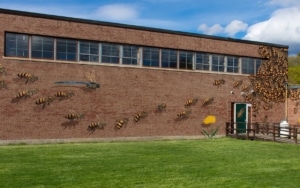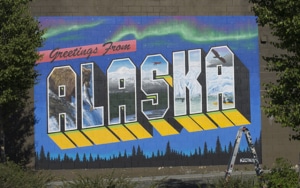Posting your artwork or photographs to social media sites Instagram and Facebook (and possibly others) may forfeit your ability to prevent copying by other users. Best case scenario – you give control to the social media platform (Instagram or Facebook) as to how, where, when and under what circumstances the image can be reused. Worst case scenario – you grant a license to any other user on that platform to use the image and the works depicted therein without paying you or getting your approval as to how, where and when the image will be used.
BEST CASE SCENARIO – INSTAGRAM OR FACEBOOK HAS CONTROL OVER HOW, WHEN AND WHERE OTHERS CAN USE YOUR WORK
Copyright protection for a work of authorship (photographs, videos, graphic designs, paintings, sculptures, songs, etc.) attaches upon creation of the work and the author owns the exclusive right to control the use and reproduction of that work. Copyright ownership gives the holder of the copyright in an original work of authorship the following exclusive rights:
- The right to reproduce and make copies of an original work;
- The right to prepare derivative works based on the original work;
- The right to distribute copies to the public by sale or another form of transfer, such as rental or lending;
- The right to publicly perform the work; and
- The right to publicly display the work.
The author may, by agreement, transfer that right to another party or parties. This is typically done by way of an assignment, where the author transfers ownership of a work to another party, or a license, where the author retains ownership but authorizes another party to use or reproduce the work. In the case of social media platforms such as Instagram and Facebook, the Terms and Conditions of Use, which every user must agree to before being granted access, have provisions governing the ownership and license of intellectual property rights, including copyright. The relevant portions of the Terms & Conditions for Instagram and Facebook as of the date of this blog are as follows:
When you share, post, or upload content that is covered by intellectual property rights (like photos or videos) on or in connection with our Service, you hereby grant to us a non-exclusive, royalty-free, transferable, sub-licensable, worldwide license to host, use, distribute, modify, run, copy, publicly perform or display, translate, and create derivative works of your content (consistent with your privacy and application settings). This license will end when your content is deleted from our systems.
Specifically, when you share, post, or upload content that is covered by intellectual property rights on or in connection with our Products, you grant us a non-exclusive, transferable, sub-licensable, royalty-free, and worldwide license to host, use, distribute, modify, run, copy, publicly perform or display, translate, and create derivative works of your content (consistent with your privacy and application settings). This means, for example, that if you share a photo on Facebook, you give us permission to store, copy, and share it with others (again, consistent with your settings) such as service providers that support our service or other Facebook Products you use.This license will end when your content is deleted from our systems.
TRANSLATION OF LEGALESE:
Note that in both permissions, the license is described as being royalty-free. That means Instagram and Facebook don’t have to pay you a dime for authorized use. The language in both also indicate that the licenses are transferable and sub-licenseable. That means that Instagram and Facebook may, without the author’s further permission, authorize others to use the work at its discretion. Moreover, the rights granted by the license – hosting, using, distributing, modifying, running, copying, publicly performing or displaying, translating, and creating derivative works – when compared to the rights listed above that are granted to the author upon creation, strongly suggests that the licenses applies to ALL rights of the author. Bottom line – by posting on Instagram or Facebook, you are allowing them (for free) to do anything with your work that you otherwise could do yourself, AND you are allowing them to authorize anyone else they choose (also for free) to do the same.
COURT CASES DO NOT FAVOR THE CREATOR
This is not just my interpretation. Last year, in two separate cases, the United States District Court for the Southern District of New York came to the exact same conclusion! The first case, Sinclair v. Ziff Davis, LLC and Mashable, Inc., involved the use of professional photographer Sinclair’s copyrighted photograph entitled “Child, Bride, Mother/Child Marriage in Guatemala”. Sinclair posted the image on her Instagram account. Mashable contacted Sinclair to request a license, and Sinclair refused. Shortly thereafter, Mashable published an article on its website which included a copy of the copyrighted photograph by way of an embedded link to Sinclair’s Instagram post. Mashable filed a motion to dismiss the complaint for copyright infringement, alleging that it used the photograph pursuant to a valid sub-license from Instagram. The court agreed, finding that Sinclair, by creating an Instagram account, agreed to Instagram’s Terms of Use, and therefore “granted Instagram the right to sublicense the photograph, and Instagram validly exercised that right by granting Mashable a sublicense to display the Photograph.” In the second case, McGucken v. Newsweek, Inc., McGucken, a photographer who focuses on landscapes and seascapes, operated a public account on Instagram where he posted some of his photographs. One day after he posted a photograph depicting a large lake in Death Valley National Park, Newsweek published an article on its website incorporating the photograph from McGucken’s Instagram post through embedding. In ruling against McGucken, the court made flattering reference to the judge’s decision in Sinclair, and went on further to say that “insofar as [McGucken] contends that Instagram lacks the right to sublicense his publicly posted photographs to other users, the Court flatly rejects that argument. The Terms of Use unequivocally grant Instagram a license to sublicense [McGucken’s] publicly posted content.”
WORST CASE SCENARIO – ANY USER OF INSTAGRAM OR FACEBOOK CAN USE YOUR WORK HOWEVER, WHENEVER, AND WHEREVER THEY CHOOSE
In its original opinion, without any evidence of an agreement between Instagram and Mashable beyond the Terms of Use, the Court in Sinclair further concluded that “Instagram granted Mashable a sublicense to embed the Photograph on its website, and Mashable exercised its right pursuant to that sublicense.” After Sinclair moved for reconsideration, the Court took a step back from this ruling, but did not foreclose the possibility that such a license may exist solely on the basis of the Terms of Use. The Court on the request for reconsideration concluded that although Instagram’s Terms of Use clearly authorized Instagram to grant a sublicense to users like Mashable, the pleadings in that case did not contain sufficient evidence that Instagram exercised its right to grant a sublicense to Mashable. Similarly, the Court in McGucken denied Newsweek’s motion to dismiss on the grounds that “there is no evidence before the Court of a sublicense between Instagram and Defendant.” Both the Mashable and McGucken cases are still active and further rulings on this issue are expected in the forseeable future. It is interesting to note that the Court in McGucken specifically stated “that it may be possible to read Instagram’s various terms and policies to grant a sublicense to embedders”, leaving open the possibility that an artist or photographer who posts his or her works on Instagram automatically grants a blanket license to the copyrighted work to all other users!
HOW DOES AN ARTIST OR PHOTOGRAPHER PROTECT HIS OR HER WORKS IN LIGHT OF THESE RULINGS?
With roughly one billion active monthly users, Instagram is almost certainly the most popular public photo sharing platform in the world. This creates quite a dilemma for artists and photographers. Posting to Instagram and Facebook is a very inexpensive way to get their works in front of billions of potential patrons and customers. However, based on the Sinclair and McGucken decisions, the photographer or artist may be giving up his or her rights to receive royalties from other users who copy that work. Moreover, the artist or photographer clearly abdicates control over the work to the social media platform and/or other users of the platform. So what can an artist/photographer do to protect his/her rights? Click here to get our FREE REPORT with details and suggestions on actions that you can take to protect your rights.



 several months of consideration and public polling, on September 5, 2018 the town of Madison, Alabama (a suburb of Huntsville, nicknamed “The Rocket City” for its close association with U.S. space missions) and team owner BallCorps, LLC
several months of consideration and public polling, on September 5, 2018 the town of Madison, Alabama (a suburb of Huntsville, nicknamed “The Rocket City” for its close association with U.S. space missions) and team owner BallCorps, LLC